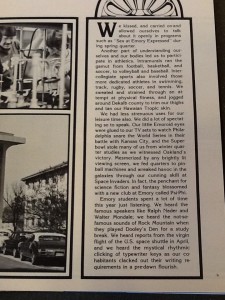This week in the archives, I noticed an article about Theater Emory. The title says, “Theater Emory Probes the Complex Nature of Women.” At first glance it seems like the perfect article for sexual identity, and the title makes one hope for some sort of bisexual or asexual topics in order to line up perfectly with what has been read this week. Although nothing is explicitly said about any type of sexuality other than heterosexual, the play has some controversial undertones. The first thing that really stuck out, was that the “five portraits” of women, or five plays, were all written by men. The article claims that the plays are about the “myth of the feminine experience” but that myth is through the eyes of men. I thought this odd at first, and easily forgave them because I figured that they just didn’t have any female play writers. However I personally think this is a prime example of men overstepping their reach and imposing what/how they believe women behave, desire, and represent.Note Sep 27, 2012 (9)
Even though they do claim to “paint” a “myth of the experience” it will be a myth told by men. Often times we see men influence, if not dictate, the perception of many things, in this case the identity of a the female. Men’s interpretations and believes are also one of the reasons female homosexuality has a less negative connotation than male homosexuality. It was not mentioned but one does wonder if they will have any homosexually based story lines, or if the male writers thought that was not essential in painting the myth of a woman. This article was written in 1983.
In a 2003 article in the Emory Report there are two sections outlined in blue, one about the status of minorities, and the other about LGBT. It tells of a Pride banquet, and also mentions the first openly gay black female to hold office in Georgia, which is a very impressive accomplishment considering the state. There is also mention of a gay-hate art exhibit. This article was published in 2003 and one can not help but think about how different it was for gay and lesbians then compared to the 1980’s. Most of the articles I have seen have been from the 80’s so it was nice to have a fresher opinion on homosexuality.


